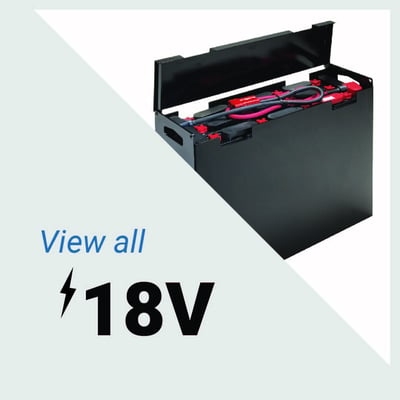
Battery Management for Industrial Batteries
Battery Management for Industrial Batteries
When it comes to industrial settings, the importance of effective battery management cannot be overstated. With the burgeoning reliance on electric machinery, especially in warehouses and manufacturing plants, managing forklift batteries efficiently has become critical. Not only does proper battery management enhance performance and longevity, but it also ensures safety and operational efficiency.
Industrial batteries, particularly those used in forklifts, represent a significant investment. They power vital operations, from moving goods around warehouses to supporting logistics chains. However, without structured management practices, these batteries can underperform or fail prematurely. So, what’s the secret sauce behind effective battery management for industrial batteries? Let’s delve into various aspects that contribute to robust battery management systems.
Understanding Forklift Batteries: The Backbone of Operations
Forklift batteries come in various types—lead-acid and lithium-ion being the most prevalent. Each type offers its own advantages and challenges.
-
Lead-Acid Batteries: Traditionally, lead-acid batteries have been the workhorses of many industries. They're reliable and relatively inexpensive compared to their counterparts. However, these batteries require regular maintenance, including watering and equalization charges to avoid sulfation—a condition that can degrade performance.

-
Lithium-Ion Batteries: In recent years, lithium-ion technology has gained traction due to its efficiency and reduced maintenance needs. These batteries charge faster and last longer than lead-acid ones. Furthermore, they offer a higher energy density which means a smaller footprint for the same power output.
Why Proper Management is Essential
Regardless of the type 18 volt flat plate forklift batteries of battery being used in your forklifts or other machinery, efficient battery management plays a key role in:
Best Practices for Battery Management
To get the most out of your forklift batteries and ensure seamless operations within your facility, implementing best practices is essential.
1. Routine Maintenance Checks
Regular maintenance checks are crucial for both lead-acid and lithium-ion forklift batteries.
-
For lead-acid batteries, this means checking electrolyte levels frequently and ensuring terminals are clean and corrosion-free.
-
Lithium-ion users should monitor battery health through built-in management systems that provide insights into charge cycles and overall health.
2. Charge Cycles Optimization
Optimizing charge cycles involves understanding when to charge your forklift batteries effectively:
- Avoid deep discharges; it's advisable not to let lead-acid batteries drop below 50% capacity before recharging.
- For lithium-ion batteries, partial charging is perfectly acceptable as they do not suffer from memory effects like their lead-acid counterparts.
Key Indicators for Battery Health Monitoring
Monitoring key indicators helps prevent unexpected failures while maximizing performance:
| Indicator | Lead-Acid | Lithium-Ion | |-------------------|-------------------------------------|----------------------------------| | Voltage Levels | Regular checks needed | Built-in monitoring available | | Temperature | Must remain cool; overheating alerts| Integrated thermal management | | Charge Cycles | Track manually | Automatic reporting available | | Maintenance Logs | Required for longevity | Minimal upkeep |
By keeping an eye on these indicators regularly, you can preemptively address potential issues before they escalate into costly downtimes.
Advanced Technologies in Battery Management Systems (BMS)
As industries evolve technologically, so do methods of managing industrial batteries. Advanced Battery Management Systems (BMS) have emerged as a game-changer in this realm.
1. Real-Time Monitoring
Modern BMS solutions offer real-time monitoring capabilities that allow operators to keep tabs on various parameters affecting battery performance—from voltage levels to temperature fluctuations—ensuring optimal functionality at all times.
2. Predictive Analytics
Using data analytics tools integrated within BMS software can help predict potential failures based on historical data patterns. This predictive approach enables early interventions before problems arise—saving time and resources down the line.
FAQs about Battery Management for Industrial Batteries
Q1: How often should I check my forklift battery? A1: It’s recommended to perform daily inspections before use—checking electrolyte levels (for lead-acid) or assessing overall health (for lithium-ion) at least once a week.
Q2: What are some signs of a failing forklift battery? A2: Common indicators include diminished run time per charge, swelling or leakage (especially with lead-acid), excessive heat during charging cycles, or irregular voltage readings.
Q3: Can I mix different types of forklift batteries? A3: No! Mixing different types or brands can cause irreversible damage; always use compatible units from reputable manufacturers.
Q4: How long does a typical industrial battery last? A4: Depending on usage patterns and maintenance practices:
- Lead-acid can last 4-7 years
- Lithium-ion typically lasts 8-10 years
Q5: What's the best way to store unused forklift batteries? A5: Store them in a cool dry place away from direct sunlight; maintain at least 50% charge status to prevent deep discharge damage over time.
Q6: Are there eco-friendly options for industrial batteries? A6: Yes! Researchers are developing greener alternatives such as sodium-sulfur or solid-state technologies which promise lower environmental impact than traditional lithium-ion or lead-acid models.
Conclusion
Battery management for industrial batteries is more than just routine checks; it’s about maximizing operational efficiency while safeguarding investments in equipment 24 volt flat plate forklift batteries like forklifts powered by these essential energy sources. By embracing best practices—from routine maintenance checks to advanced monitoring technologies—you pave the way for sustainable operations that minimize costs while enhancing productivity overall.
In short—and as any seasoned operator will tell you—the old adage rings true here too; “A stitch in time saves nine.” Investing effort into proper battery management today will yield dividends tomorrow!
